Diving In
Stablecoins like USDT and USDC are the lifeblood of DeFi and Web3, enabling fast, low-cost transactions and bridging traditional finance with blockchain. However, the European Union’s Markets in Crypto-Assets (MiCA) regulation, fully effective as of December 30, 2024, is shaking up the stablecoin landscape. MiCA introduces strict rules for issuers, aiming to ensure transparency, consumer protection, and financial stability. While some stablecoins, like USDC, are adapting swiftly, others, like USDT, face significant hurdles, with major exchanges delisting non-compliant tokens. This post dives into MiCA’s framework, explores how USDT and USDC are navigating these changes, and examines global regulatory trends impacting stablecoins. We’ll also look at the controversial ban on algorithmic stablecoins and what it means for Web3 innovation. Ready to understand the future of stablecoins? Let’s break it down.
MiCA’s Stablecoin Framework – What’s New?

The EU’s MiCA regulation, enacted in June 2023 and fully implemented by December 2024, is the world’s first comprehensive crypto framework, with a strong focus on stablecoins due to their role in DeFi and payments. MiCA classifies stablecoins into two categories:
- Electronic Money Tokens (EMTs): Pegged to a single fiat currency (e.g., USDT, USDC for USD; EURC for EUR), functioning like e-money.
- Asset-Referenced Tokens (ARTs): Backed by multiple assets, like a basket of currencies or commodities (e.g., DAI).
Key requirements include:
- Authorization: Issuers must obtain an EU license as an Electronic Money Institution (EMI) or Credit Institution (CI).
- Reserve Rules: EMTs require a 1:1 liquid reserve, with at least 60% held in EU banks; ARTs need 30% in EU banks.
- Transparency: Issuers must publish detailed white papers and regular reserve attestations.
- Consumer Protection: Strict anti-money laundering (AML) measures and redemption rights for users.
- Algorithmic Stablecoin Ban: MiCA prohibits algorithmic stablecoins (e.g., TerraUSD), citing risks after the 2022 Terra-Luna collapse, as they lack tangible asset backing.
MiCA’s phased rollout began with stablecoin rules on June 30, 2024, replacing fragmented national laws like France’s PACTE. By July 2026, all crypto-asset service providers (CASPs) and issuers must comply, with transitional measures allowing pre-existing providers to operate until then. This framework aims to boost trust but challenges global issuers.
USDT’s Challenges in the EU

Tether’s USDT, with a $137.3 billion market cap and 78% of the global stablecoin market, dominates crypto trading. However, MiCA poses significant hurdles:
- Non-Compliance: Tether lacks an EU EMI license, and its reserve transparency has faced scrutiny, conflicting with MiCA’s strict disclosure rules.
- Delistings: Major exchanges like Coinbase (December 2024), Crypto.com (January 2025), and Kraken (March 2025) have delisted USDT in Europe due to non-compliance, reducing its liquidity. Posts on X highlight Tether’s refusal to adapt, with some predicting a sharp decline in EU usage.
- Economic Barriers: MiCA’s requirement to hold 60% of reserves in EU banks is costly for Tether, whose reserves are primarily US-based. This led to a 2.8% market cap dip in January 2025, the steepest in two years.
Tether is exploring alternatives, like backing Malta-based StablR for MiCA-compliant stablecoins (EURR, USDR), but its core USDT product remains at risk. Without compliance, USDT could face restrictions or a de facto ban, pushing users to alternatives. This uncertainty has sparked debate on X, with some arguing USDT’s global dominance will persist via decentralized exchanges (DEXs), which MiCA doesn’t regulate, while others see its EU market share eroding.
USDC’s Adaptation and Rise

Circle’s USDC, the second-largest stablecoin, is thriving under MiCA:
- Compliance Success: Circle secured an EMI license from France’s ACPR in July 2024, making USDC and EURC the first major MiCA-compliant stablecoins. Regular third-party reserve attestations align with MiCA’s transparency rules.
- Market Share Growth: USDC’s EU market share rose from 10% to 12% by late 2024, while EURC and other euro-backed stablecoins like EURCV hit 67% market share. Circle’s launch of EURC on Base, an Ethereum Layer-2, boosts accessibility.
- Strategic Moves: Circle’s French subsidiary ensures compliance with MiCA’s reserve localization (60% in EU banks), positioning it as a trusted option for EU users.
USDC’s proactive approach contrasts with USDT’s struggles, with exchanges like Coinbase prioritizing USDC for trading pairs. Posts on X praise Circle’s regulatory alignment, noting its edge in centralized exchanges (CEXs) and growing DeFi adoption. However, USDC faces challenges ensuring full compliance across all 27 EU states, particularly with reserve localization, as national regulators interpret rules differently. Despite this, USDC’s transparency and licensing make it a MiCA success story, likely driving further adoption in Web3 ecosystems like DeFi and cross-border payments.
Global Regulatory Trends and Algorithmic Stablecoins
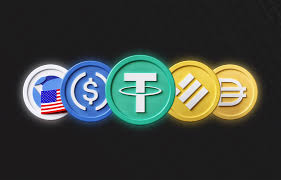
MiCA sets a global precedent, influencing stablecoin regulations worldwide:
- United States: No comprehensive federal framework exists, but state-level rules (e.g., New York’s BitLicense) require 1:1 liquid reserves and licensing. Proposed federal laws may mirror MiCA’s reserve and transparency standards.
- United Kingdom: The UK’s 2023 proposals focus on fiat-backed stablecoins, requiring liquid reserves and FCA oversight, aligning closely with MiCA.
- Asia and Middle East: Jurisdictions like Abu Dhabi accept USDT and USDC, but Singapore and Hong Kong are developing stricter licensing and reserve rules, inspired by MiCA.
Algorithmic Stablecoins: MiCA’s ban on algorithmic stablecoins, which adjust supply via smart contracts (e.g., DAI, TerraUSD), stems from their volatility risks, highlighted by Terra’s 2022 collapse. Globally, algorithmic stablecoins face scrutiny:
- Challenges: Their decentralized nature complicates regulation, and depegging risks (e.g., USDC’s brief depeg post-SVB collapse) raise concerns.
- Innovation: Some argue the ban stifles innovation, as algorithmic stablecoins enable trustless systems. Projects like DAI persist on DEXs, unregulated by MiCA, but their EU usage is limited.
X posts suggest MiCA’s strict rules could push algorithmic stablecoin activity to DeFi or non-EU markets, but their high-risk profile limits mainstream adoption. Compliant fiat-backed stablecoins are likely to dominate Web3’s regulated future.
Impact on DeFi and Web3 Ecosystems
Stablecoins are critical for DeFi (e.g., Uniswap, Aave) and Web3 applications like gaming and payments. MiCA’s rules reshape their role:
- DeFi: Compliant stablecoins like USDC and EURC are gaining traction on CEXs and DeFi platforms, with USDC’s Uniswap market share at 55% (down from 90% in 2022 due to USDT’s DeFi liquidity). Non-compliant USDT may shift to DEXs, maintaining DeFi relevance but losing CEX volume.
- Web3 Adoption: MiCA-compliant stablecoins enhance trust for Web3 payments and cross-border settlements, with euro-backed tokens like EURCV integrating with traditional banking. However, USDT’s delistings could disrupt liquidity for Web3 projects reliant on its $137 billion market.
- Innovation vs. Regulation: MiCA’s algorithmic ban limits experimental DeFi models, but compliant stablecoins enable scalable, secure Web3 applications, from gaming (e.g., W3Gamez) to tokenized assets.
As MiCA sets a global standard, Web3 projects must pivot to compliant stablecoins to access EU markets, driving adoption but challenging non-compliant issuers.
Wrapping It Up
MiCA is transforming the stablecoin landscape, pushing issuers like Circle’s USDC to the forefront while challenging USDT’s dominance in Europe. With strict licensing, reserve, and transparency rules, MiCA ensures stability but raises barriers for non-compliant players. Globally, MiCA’s influence is shaping regulations, favoring fiat-backed stablecoins over algorithmic ones. For DeFi and Web3, compliant stablecoins like USDC and EURC offer trust and scalability, but the loss of USDT’s liquidity could disrupt markets. To stay ahead, explore MiCA-compliant options like USDC or EURC for trading and Web3 projects. How will you adapt to this regulatory shift? Share your thoughts in the comments or join the conversation on X! #Stablecoins #MiCA #Web3
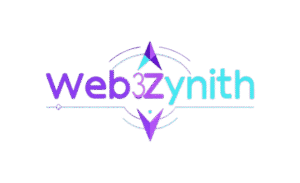
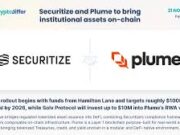

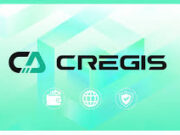









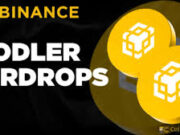
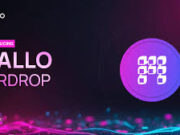
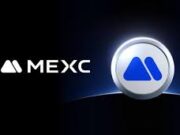

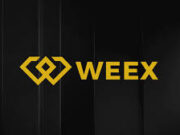
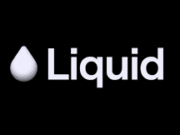


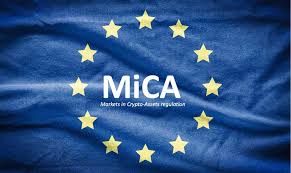
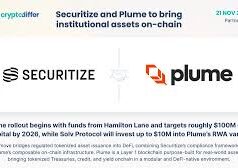





Why’s USDT in trouble but USDC’s fine? Is it just because Circle’s got better audits
USDT’s basically banned in the EU, and I’ve got a bunch in my wallet! How hard is it to swap to USDC or EURC
it’s cool to see crypto getting legit with all this regulation,